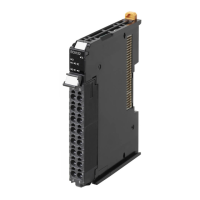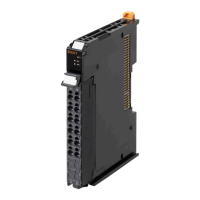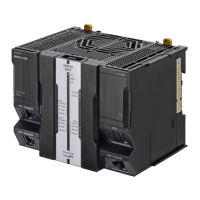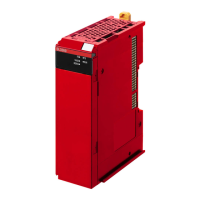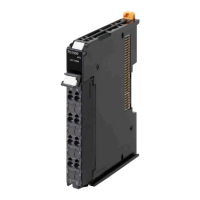10 I/O Refreshing
10 - 4
NX-series EtherCAT Coupler Unit User’s Manual (W519)
10-2 I/O Refreshing for EtherCAT Slaves
This section provides a general description of I/O refreshing between the built-in EtherCAT port on the
NJ-series CPU Unit and EtherCAT slaves.
The built-in EtherCAT port on the NJ-series CPU Unit uses synchronization that is based on a distrib-
uted clock (DC) to process communications with EtherCAT slaves.
This type of synchronization uses a mechanism called a distributed clock for EtherCAT communications
to synchronize each slave on the network.
EtherCAT slaves that support distributed clock synchronization have a clock that is shared by all slaves
in the network.
Interruptions are generated in the slaves at precise intervals based on this clock. Each slave executes
I/O processing at the precise timing (Sync0) of these interruptions. The operating mode of slaves that
operate in this manner is called DC Mode.
Some slaves do not support the DC Mode. In that case, the process data communications cycle and
the I/O cycle of the slaves operate asynchronously. The operation mode of slaves that operate in this
manner is called Free-Run Mode.
The built-in EtherCAT port on the NJ-series CPU Unit can execute I/O refreshing at the same time for
slaves that operate in the DC Mode and slaves that operate in Free-Run Mode.
This section describes the operation of I/O refreshing between the built-in EtherCAT port on the
NJ-series CPU Unit and EtherCAT slaves.
Synced slaves #1 and #2 in the figure labeled Example of I/O Refreshing Mode Operation on page 10-5
operate in DC Mode.
The inputs are read at a fixed interval for each slave based on Sync0. Because the performance levels
of the slaves are different, inputs are not read at the same time across all of the slaves ((A) in the fig-
ure).
Each slave uses Sync0 as a trigger to perform output processing. Because the performance levels of
the slaves are different, the processing results do not appear at the output terminals at the same time
across all of the slaves ((B) in the figure).
10-2-1 I/O Refreshing Modes
10-2-2 I/O Refreshing Mode Operation
DC Mode Operation
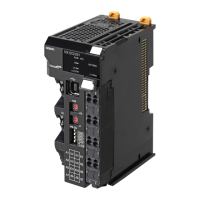
